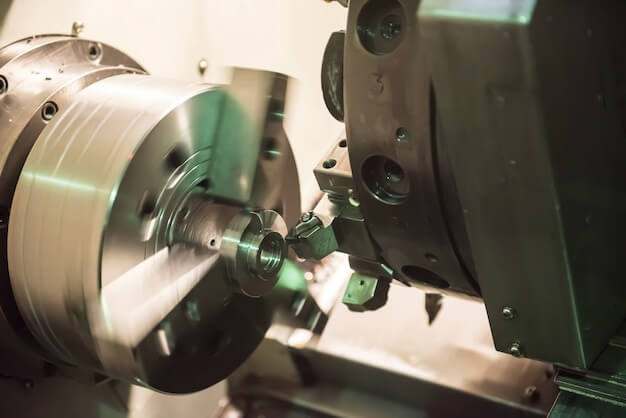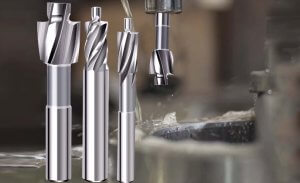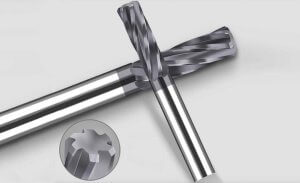Introduction: Renewable Energy and the Role of CNC Machined Metal Components
Renewable energy, characterized by its ability to replenish naturally on a human timescale, has emerged as an environmentally friendly alternative to non-renewable, fossil-fuel-based sources. Harnessing the power from renewable resources like wind, sunlight, water, etc., can significantly lower carbon emissions contributing to global warming. A crucial element in this transformative process is Computer Numerical Control (CNC) machined metal components. Acting as building blocks for sophisticated systems needed for renewable energy generation, these precision-engineered parts have escalated advancements in this sector. From high-performance gauges measuring energy output in solar panels, detailed blade designs in wind turbines, to component structures in hydroelectric plants – all extensively benefit from the nuanced calculations and automation that CNC machining provides.
Why Renewable Energy Needs Transformation
The need for a transformative approach towards renewable energy can be traced back to the current setbacks experienced in wind, solar, and hydroelectric power. The adoption of these energy sources is often inhibited by factors such as low efficiency, inconsistent supply due to weather reliability, large installation space requirements, high upfront costs, and an overall lack of infrastructure capable of supporting mass transition across the globe.
- Efficiency: Currently, the conversion rates from sunlight or wind into usable electrical energy stand significantly lower when compared with traditional fossil fuel-based methods.
- Reliability: Unless stored efficiently, the availability of both wind and solar energy depends largely on weather conditions causing intermittent disruptions.
- Space Requirements: Large scale installations, particularly relevant to solar farms and wind turbines, are necessary to generate substantial amounts of energy which presents land use challenges.
- Cost: High initial investment for setup and maintenance of renewable technologies pose significant financial barriers, thereby slowing down its widespread acceptance.
- Infrastructure: Though technology continues to improve, there’s a scarcity of comprehensive infrastructural systems that can support efficient and extensive integration of renewables within existing grid networks.
To overcome these issues and ensure smoother adoption of renewable forms of energy, advancements like CNC machined metal components come into the picture. These precision parts enhance system performance and durability while reducing waste generation, making renewable energy systems more viable and accessible.
Understanding the CNC Machining Process:
- CNC machining plays a crucial role in transforming renewable energy with its ability to create precise and durable metal components for renewable energy systems.
- The process involves advanced technology and computer programming to cut, shape, and create metal components that reinforce renewable energy sources.
- This article provides a comprehensive guide to the CNC machining process for transforming renewable energy with CNC machined metal components.
Role of CNC Machined Metal Components in Reinforcing Renewable Energy Sources
The precision manufacturing capability of Computer Numerical Control (CNC) machines evokes enhanced durability and longevity for renewable energy systems. This is because the exactness provided by this process reduces errors, thereby extending the life expectancy of these systems. The machinery used in various renewable energy platforms like wind turbines, solar panels, and hydroelectric power plants, to mention a few, benefit hugely from CNC machining.
- Take for instance, the gearbox in wind turbines — it’s produced using CNC-operated machinations ensuring high precision, maximum efficiency and extended lifespan which is deemed crucial due to locations often characterized by severe weather conditions.
- Similarly, components within solar panels such as electrical inverters are manufactured with CNC machines guaranteeing extreme accuracy for optimal performance.
- Another excellent example would be the turbine blades used in hydroelectric plants, whose intricate design requirements calls for CNC machining effectiveness that translates into efficient and reliable operations over time.
Therefore, through the provision of meticulous manufacturing solutions, CNC machined metal components fundamentally reinforce the sustainability and dependability of renewable energy sources
.
Benefits of Using CNC-Machined Metal Components for Renewable Energy Systems
The use of Computer Numerical Control (CNC) machined metal components in renewable energy systems offers significant advantages. For example, in wind energy systems, CNC-machined components can help to create more efficient and durable turbines by reducing the chances of mechanical failures, thus ensuring a longer lifespan. Further, with solar energy systems, these precision parts can enhance the mounting systems and tracking mechanisms of solar panels to ensure optimal sun exposure, resulting in increased power generation efficiency.
Moving on to hydro-electric power plants, the use of CNC Machining can provide precise shaping of turbine blades and improve wear resistance, leading to an increase in overall energy production. An excellent illustration of this successful transformation is seen in the renovation of old hydropower stations. By replacing conventional components with CNC-machined ones, these facilities have managed to significantly boost their capacity and lifespan while minimising maintenance costs.
- Wind Energy: Use of CNC-machined parts in turbines aids in creating highly operational and long-lasting systems.
- Solar Power: Optimization of orchestrating mechanisms using precision CNC objects leads to enhanced power efficacy.
- Hydro-Electric Power Plants: Accurate design of turbine blades achieved through CNC machining contributes to boosting energy output.
Environmental Impacts & Sustainability of Using CNC Machined Components
The utilization of durable CNC machined parts in renewable energy machines has several positive environmental effects. Firstly, these components are made to withstand the test of time which means they require less frequent replacement, leading to a decrease in waste generation and resource consumption. Furthermore, CNC machining is highly accurate, minimizing material wastage during production.
- Durability: These precision-engineered parts contribute towards long-term usage reducing the need for premature replacements thus conserving resources.
- Efficiency: High accuracy levels diminish errors, limiting materials’ wastage during the manufacturing phase promoting efficient use of raw materials.
Compared to traditional methods, this approach offers greater sustainability due to the high efficiency and durability characteristics enhancing the lifecycle of renewable energy machines. For example, wind turbines with CNC-machined metal components exhibit enhanced performance and longevity compared to those equipped with traditionally crafted parts, implying fewer overall materials used over time. The convergence of these factors translates to decreased environmental impact and promotes sustainable practices within the renewable energy sector.
Other Articles You Might Enjoy
- Innovative CNC Machining for Advanced Spacecraft Components
Introduction: CNC Machining and its role in Spacecraft Components Computer Numerical Control (CNC) machining has, over the years, proven to be one of the most integral pillars within manufacturing industries.…
- Ceramic Tooling in CNC Machining: Breaking the Myths About Durability and Performance?
CNC Machining and Ceramic Tooling: Busting the Myths Computer Numerical Control (CNC) machining is an advanced method of manufacturing where pre-programmed software controls the movement of factory machinery, giving intricate…
- CNC Machining Parts Factory: Specializing in High-Quality Steel
Introduction to CNC Machining and its Significance CNC (Computer Numerical Control) machining is a critical component in modern manufacturing, responsible for executing complex cuts and designs with absolute precision. This…








